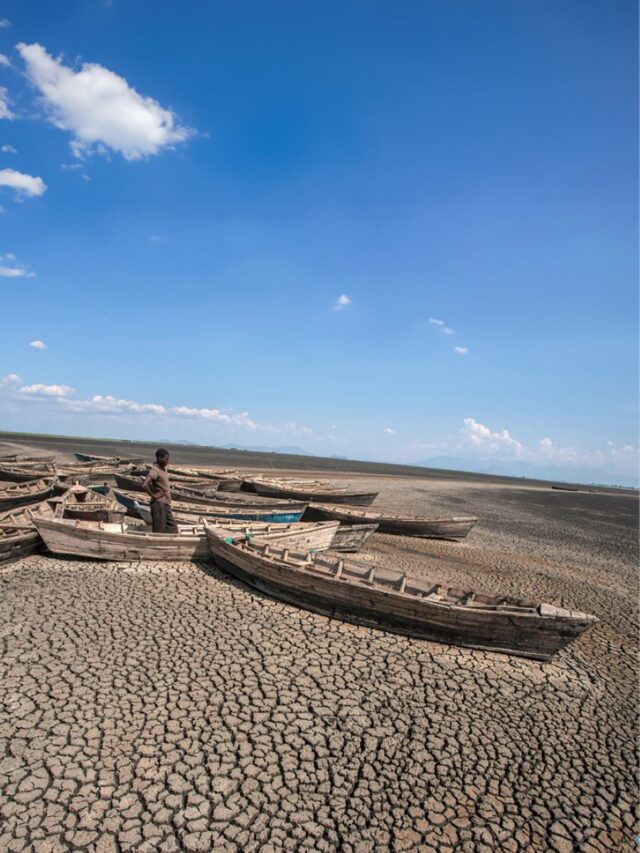…The paper indicates that floods are the most prevalent natural disasters in Africa, while droughts significantly affect a larger number of people, this underscores the need for African countries to step up investments in early warning systems.
…In the 29 African countries where statistics were available, 1,436 disaster events were recorded between 2000 and 2023. The paper shows that 66% of these events were associated with floods, 15.4% with storms, and 11.7% with droughts
THUR JULY 25 2024-theGBJournal| The African Risk Capacity (ARC) has published a white paper examining the state of natural disasters in Africa. The paper titled “The State of Natural Disasters in Africa”, sheds light on a growing concern: the increased frequency of weather-related natural disasters and their devastating economic impact on the continent.
Over the last decade, the frequency of disasters has steadily increased, rising from 32 incidents in 2014 to 56 occurrences in 2023, mainly due to floods, in 29 African countries where data is available. It is estimated that African governments spent $2.2 billion managing weather-related natural disasters in 2023, with approximately 25% attributable to Libya, which accounts for over 0.5% of Libya’s GDP.
Climate change underlies the more frequent and severe weather events like droughts and floods, causing significant loss of life, destruction of livelihoods, and displacement of communities. Analysing the economic burden of weather disasters on African nations, the paper provides insights into the cost of disaster risk management, explores the current trajectory of weather events, and proposes response mechanisms for effective disaster management.
“Understanding the current state of disaster risk management and the challenges and opportunities it presents is crucial in informing effective response strategies. The publication of the ARC white paper marks an important step forward in our ambition to contribute to knowledge creation,” said Ibrahima Cheikh Diong, UN Assistant Secretary-General and ARC Group Director General.
Floods occur more frequently than droughts, but droughts impact a significant number of people.
In the 29 African countries where statistics were available, 1,436 disaster events were recorded between 2000 and 2023. The paper shows that 66% of these events were associated with floods, 15.4% with storms, and 11.7% with droughts. The impact of heavy rainfall has been intensified by deforestation and inadequate land management practices.
Even though floods are dominant, the data showed that droughts affected more people. For instance, in 2014, about 5 recorded drought events affected more than 25 million people, whereas 20 flood events affected less than 1 million people. This observed pattern is consistent in the timeframe covered by the data.

Tracking the occurrence of weather-related natural disasters since the year 2000, Africa has the third highest number of weather-related natural disasters among five continental regions: Asia, the Americas, Europe, and Oceania. The worst-affected countries in Africa, were South Africa, Mozambique and Madagascar in southern Africa; Nigeria in the west; and a band stretching north-eastwards from Angola to Ethiopia and Somalia in the Horn of Africa.
Munich Re estimates that the continent’s total direct economic loss from such events over the year was $8 billion. Storm Daniel in Libya and Tropical Cyclone Freddy in Mozambique were two of the most severe events that occurred in Africa in 2023, estimated to have inflicted economic losses of $1.65 billion and $1.53 billion, respectively.
Moreover, the white paper shows that changing weather patterns promote the spread of waterborne diseases like cholera and insect-borne diseases like malaria, threatening the progress that has been made on reducing the incidence of epidemics since 2000.
In addition, the paper highlights the gender-based inequalities in the aftermath of natural disasters. It acknowledges that while natural disasters do not discriminate based on gender, their consequences are not gender-neutral. Women bear a disproportionate burden in natural disasters due to resource limitations and structural factors that expose them to higher risks.
Step up investments in early warning systems
The paper highlights the importance of early warning systems and their ability to save lives, showcasing of Africa RiskView, ARC’s early warning system designed to anticipate and manage climate risks.
“It’s simply unacceptable that only 40% of Africa is currently covered by EWS and even those are compromised by quality issues,” noted Diong, highlighting that just 24 hours’ notice of an impending hazardous event can cut the ensuing damage by up to 30%.
According to the United Nations Office for Disaster Risk Reduction, countries with substantial to comprehensive early warning systems coverage have one-eighth the disaster mortality of those with limited or no coverage, highlighting the significant benefits of investing in EWS in terms of saving lives.
African countries embracing parametric insurance
Beyond its proprietary early warning system, ARC’s white paper also showcases the unique features of the ARC offering such as its capacity building programme and its parametric risk insurance offering.
ARC’s value proposition brings together four critical elements of preparedness for member states: capacity building, early warning, risk pooling, and risk transfer to create a pan-African climate response system. ARC serves as an African-owned solution, contributing to resilience building and managing extreme climate risks and disease outbreaks on the continent.
It can be observed that African countries are increasingly focusing on reducing the risk of disasters, as evidenced by the increase in the number of countries participating in ARC’s risk pools. Over the last ten years, ending in 2023, the insured value increased from $129 million to $186 million, with a large proportion covering the risk of drought. Despite affordability challenges, the number of insured countries increased from four in 2014 to thirteen in 2022, and further jumped to twenty-four countries in 2023.
“Africa’s journey to managing disasters and building resilience is gaining momentum, but there’s much ground to cover”, said Diong. “With competing development priorities like education and healthcare, many countries lack sufficient resources to build robust disaster risk management strategies. From the findings of this research, the urgent need to enhance capacity-building efforts for risk reduction in Africa is evident.”
X-@theGBJournal|Facebook-the Government and Business Journal|email:gbj@govbusinessjournal.com|govandbusinessj@gmail.com










